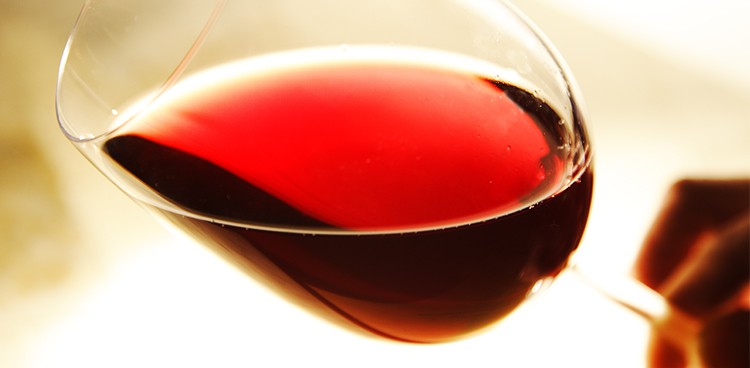
When my editor at culture asked if I could match a red wine to spring’s fresh cheeses, I answered, “Sure,” although I was not sure at all I could find said red wine. After all, Sauvignon Blanc is the classic pairing; who needs anything else?
But the question got me thinking: The classic pairing of goat cheese and wine comes out of France’s Loire Valley, where the cool temperatures keep the Sauvignon Blanc brisk and lively with green, grassy notes—excellent for matching the region’s famed goat cheeses. Move downstream from the Sauvignon grapevines, strongholds of Sancerre and Pouilly-Fumé, to the region right around Tours, and the red varieties take over. Many are made from Cabernet Franc, a variety that fathered Cabernet Sauvignon in a long-ago tryst with Sauvignon Blanc. It bears a family resemblance to the white in its nervy acidity, lean fruit, and herbal notes. And, if you’re playing “what grows together goes together,” then Cabernet Franc has every reason to go as well with the local cheeses as does its white counterpart.
However, not all Cabernet Francs are created equal. From the Loire, the grape has spread all over the world, most notably into Bordeaux, where it’s used in conjunction with Cabernet Sauvignon and Merlot to make tannic, long-lived wines, and also in California, where the warmer, sunnier climate typically produces rich, dark cabs—neither terrific with delicate young cheeses.
Even the Loire makes a wide range of Cabernet Francs that, with some chilling and a blindfold, could pass as white. At the other end of the spectrum are tannic, cellar-worthy bottlings that would flatten almost any cheese. In general, wines sporting the most general appellations—Saumur, Touraine, and Anjou—on their labels are the lightest ones. Wines from subregions such as Bourgeuil, Chinon, and Champigny tend to be richer, although most are still light enough to let the grassy flavors of a good goat cheese shine through. (Higher prices tend to indicate which are the heavy hitters better left to the cellar or to a steak.)
After my cerebral analysis, I need to do some reconnaissance, so I head to my local cheese store, Stinky Bklyn, where cheesemonger Dan Granke has just pulled from the cave a gorgeous Selles-sur-Cher, a young goat’s milk cheese with a cashmere-soft, grey-mottled rind. I ask him what wine he’d drink with it. “A red,” he answers unequivocally. “Why would you have anything else? It’s like meat and potatoes, or stir-fry and rice.”
Later, over a snow-white slice of Humboldt Fog and a Chinon, I begin to see what he means. (I’m still too scared to subject the Selles to a red.) The slight tannins in the wine seem to make the cheese feel creamier; red fruit flavors play up the sweetness of the milk. It seems more fully realized than any match with white wine.
Then I go for the Selles. It’s gorgeous, dense, and as sticky as peanut butter, with an earthy, grassy funk. This time the red pulls out that earthy character while the cheese seems to make the wine feel brighter and fresher. It’s kinetic and delicious. Just for good measure, I cut into a small button of Palhais, a superfresh, salty-sweet goat cheese from Portugal. The salt makes the acid in the wine dance, while the sweet milk plays up its fruit. It rocks with red wine.
When I tell Granke about this satisfying matchup later, he nods. “You know, I’ve basically found two kinds of cheese that go really well with red: Spanish cheese and goat cheese. It’s that vegetal acidity, something about the fight between the wine’s acidity and that of the cheese that’s really fun. One always wins, coming through with a crisp, cutting note, but the other one doesn’t taste tart at all.” On the contrary: when the wine wins, the cheese never tastes creamier; when the cheese wins, a lean, vegetal wine like Cabernet Franc suddenly seems juicy. He’s right: Why would you do anything else?
Cheese-friendly Cabernet Francs:
- Catherine & Pierre Breton 2006 Bourgueil Trinch!
Louis/Dressner Selections, N.Y.; $2 - Clos Roche Blanche 2006 Touraine Pif
Louis/Dressner Selections, N.Y.; $16 - Domaine de la Chanteleuserie 2006 Bourgueil Les Alouettes
Kermit Lynch Wine Merchant, Berkeley, Calif.; $16 - Yves Lambert 2005 Saumur-Champigny Domaine Saint de Just
J. Cambier Imports, McLean, Va.; $23 - Lang & Reed 2007 Napa Valley North Coast Cabernet Franc; $22
- Langlois-Chateau 2005 Chinon Les Montifault
Paterno Wines International, Lake Bluff, Ill.; $18 - Frederic Mabileau 2006 St. Nicolas de Bourgueil Les Rouillères
Jon-David Headrick Selections, Chapel Hill, N.C.; $16 - Schneider Vineyards 2005 North Fork of Long Island Le Breton Cabernet Franc; $25
- Robert Sinskey 2005 Los Carneros Napa Valley Vandal Vineyard Cabernet Franc; $40
- La Source du Ruault 2006 Saumur Champigny
Weygandt-Metzler, Unionville, Pa.; $20
Feature Photo Credit: Mary Garnish




